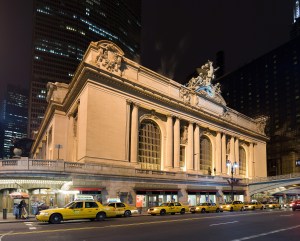Real Estate Industry Poised for Midtown East Rezoning Victory
By Al Barbarino October 25, 2013 3:45 pm
reprintsHundreds of opponents and supporters of Mayor Michael Bloomberg‘s controversial plan to rezone a 73-block area in Midtown East descended on the City Council Tuesday for a public hearing leading up to a final vote on the proposal scheduled for next month.
 The rezoning, brought before the packed house for a final hearing before the vote, could transform the area surrounding Grand Central Terminal, ushering in a new era of skyscrapers in a part of town that many believe became obsolete long ago.
The rezoning, brought before the packed house for a final hearing before the vote, could transform the area surrounding Grand Central Terminal, ushering in a new era of skyscrapers in a part of town that many believe became obsolete long ago.
“We have an area that’s viewed as one of the most important office districts in the world and there has been just about zero construction there in the last two decades,” Real Estate Board of New York President Steven Spinola told The Commercial Observer. “Midtown East is a resource that in effect is being strangled by an inability to tear down old buildings that are no longer competitive.”
The average age of buildings in the district is 73 years old, with 80 percent of all buildings being older than 50 years old, according to REBNY. Over the past decade, only two new office properties have been developed in the district, making a modernization of the area imperative in order to compete globally.
“By modernizing our current office buildings to meet the needs of today’s companies, we will be able to maintain our position as the financial capital of the world,” said Massey Knakal’s Clint Olsen, a director of sales focused on Midtown East.
The plan would bring much-needed tax revenue along with the new office space, proponents argue. And thanks to a July amendment, following a rejection by multiple community boards, residential units would now be allowed to comprise up to 20 percent of the total space within new office skyscrapers.
A key provision of the rezoning also states that developers would be able to buy extra air rights from the city, for $250 per square foot, through district improvement bonuses, which would foot the bill for improvements to public space in the area. Mr. Olsen said the DIB plan would raise as much as $750 million in funding.
Under current zoning, David Levinson, a developer who plans to redevelop an aging office building at 425 Park Avenue, could only rebuild to the same size if he retains 25 percent of the existing structure.
“We think it’s better for both the city and for us that it passes,” he said. “We would have the ability to pay the city up to $35 million dollars (in DIB payments), the ability to tear down 100 percent of the building, and the ability to build the building marginally larger.”
But some argue that the city is undervaluing the air rights. Philip Bowman, a lawyer representing an air rights owner, for instance, reportedly wrote in testimony to the City Council earlier this week that developers would buy those rights at “a level substantially below the market rate.” Mr. Spinola, however, factoring in additional costs to developers, including tenant buyouts, lease terminations and demolitions, put the number “between $200 and $250.”
The City Council could take voting cues from speaker hopeful Daniel Garodnick, who oversees much of the district but seemed unconvinced on Tuesday.
“While the proposal has merit… it remains incomplete,” he was quoted as saying, in the New York Times, noting that he had “no hesitation taking this up with the next administration.”
Even industry professionals admitted the tight parameters built into the legislation, including a restriction that says a lot must occupy an entire block front in order to qualify, will prevent the area from realizing its true potential.
“While the spirit of the Midtown East rezoning is well intended, the legislation, as presently drafted, will be narrowly used at best,” Massey Knakal Chairman Bob Knakal said. “There are plenty of underutilized lots in Midtown East that have no chance of benefiting from this legislation.”
The current administration, however, which has put more than 120 rezonings through, is poised to pass the deal on its watch, emphasizing on Tuesday a $100 million program that would fund subway improvements in, around and under Grand Central, including a public plaza south of Grand Central and pedestrian walkways along the Grand Central viaduct.
Meanwhile, the council is slated to vote late next month, and the industry is confident in a favorable outcome.
“I expect it will go through,” Mr. Spinola said. “I still can’t figure out the negatives.”



